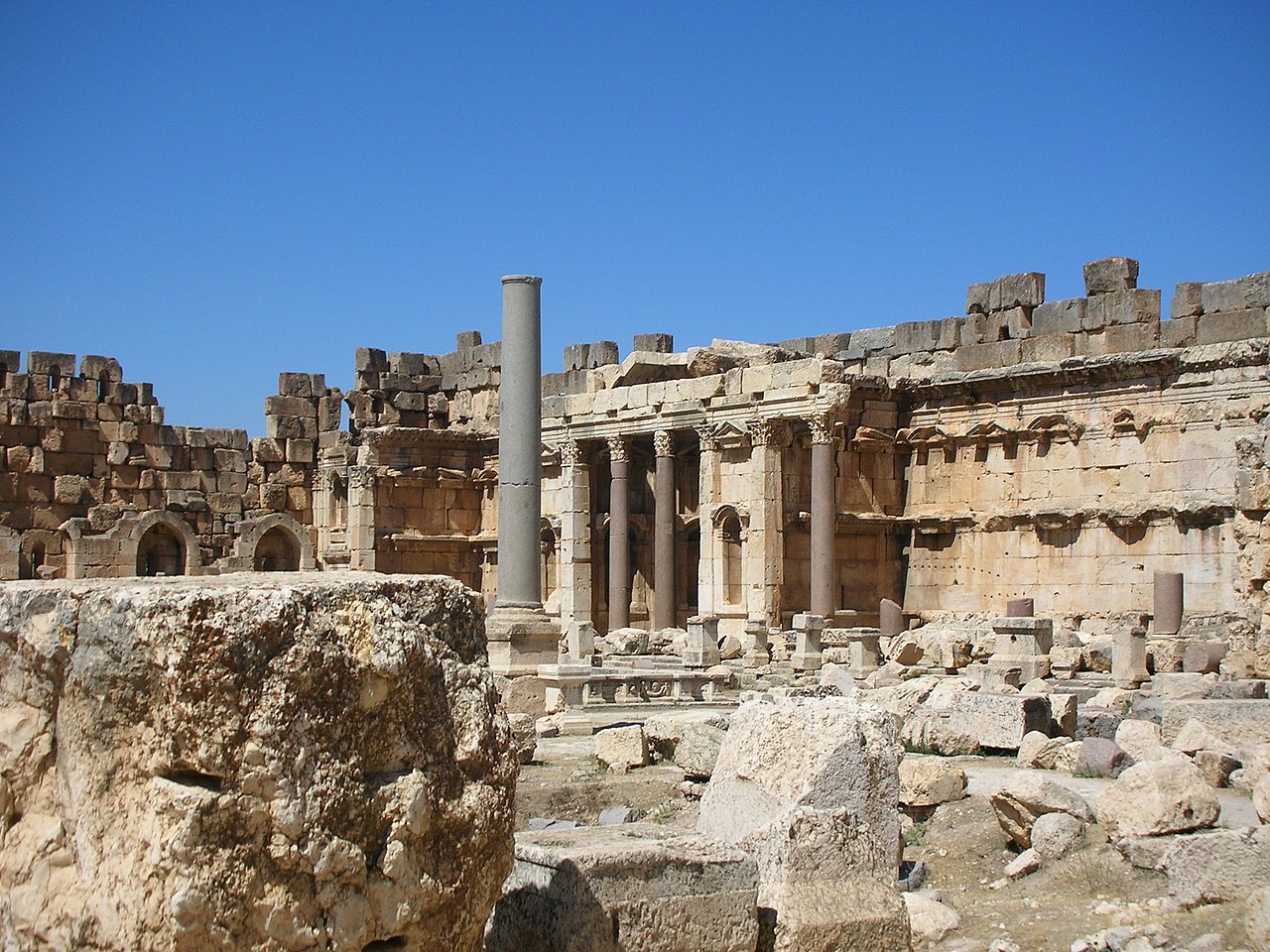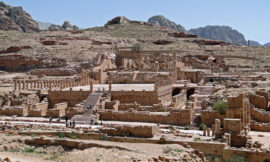The Temple of Jupiter, located in the ancient city of Baalbek in Lebanon, is a monumental architectural marvel that stands as a testament to the grandeur and power of the Roman Empire. Dedicated to Jupiter, the king of the Roman gods, this imposing temple is one of the largest and best-preserved Roman religious structures in the world, captivating visitors with its sheer size, intricate design, and rich historical significance.
Constructed during the reign of Emperor Augustus in the 1st century BCE and later expanded and embellished by subsequent Roman emperors, the Temple of Jupiter is a masterpiece of ancient architecture, boasting massive stone blocks, towering columns, and elaborate friezes that reflect the opulence and grandeur of the Roman Empire.
The temple is situated atop a massive podium, measuring over 88 meters long and 48 meters wide, which was constructed using some of the largest stone blocks ever quarried and transported in antiquity. These blocks, some of which weigh over 300 tons, were quarried from nearby mountains and transported to Baalbek using sophisticated engineering techniques that remain a marvel of ancient ingenuity.
The façade of the Temple of Jupiter is adorned with 54 towering columns, each standing over 20 meters tall and intricately carved with elaborate Corinthian capitals and floral motifs. These columns support a massive entablature adorned with intricate friezes depicting scenes from Roman mythology, including the exploits of Jupiter and other gods.
The central sanctuary of the temple, known as the cella, housed a colossal statue of Jupiter, which was the focal point of religious worship and ceremonies. Surrounding the cella were various chambers and rooms used for storage, administration, and ritual purposes, while a large courtyard in front of the temple served as a gathering place for worshippers and pilgrims.
In addition to its religious significance, the Temple of Jupiter also served as a symbol of Roman power and authority, asserting the dominance of Rome over the conquered territories of the Eastern Mediterranean. Its monumental scale and elaborate design were intended to impress and awe both the Roman subjects and foreign visitors, demonstrating the might and magnificence of the Roman Empire.
Throughout its long and storied history, the Temple of Jupiter underwent numerous transformations and changes in ownership, with various civilizations leaving their mark on its structure and design. During the Byzantine period, the temple was converted into a Christian church, with new architectural elements added to accommodate the needs of the Christian community.
In the centuries that followed, the temple fell into disrepair and was gradually buried beneath layers of sediment and debris. It was not until the 19th century that the temple was rediscovered by European explorers, who embarked on extensive excavation and restoration efforts to uncover its ancient splendor.
Today, the Temple of Jupiter stands as a UNESCO World Heritage Site, recognized for its outstanding universal value and significance to humanity. It is one of the most visited tourist attractions in Lebanon, attracting thousands of visitors each year who come to marvel at its breathtaking beauty and learn about its rich history and cultural significance.
In conclusion, the Temple of Jupiter is a monumental testament to the grandeur and power of the Roman Empire, a masterpiece of ancient architecture that continues to inspire awe and wonder in all who behold it. From its massive stone blocks and towering columns to its elaborate friezes and rich history, the temple stands as a symbol of the enduring legacy of one of the greatest civilizations in history.



